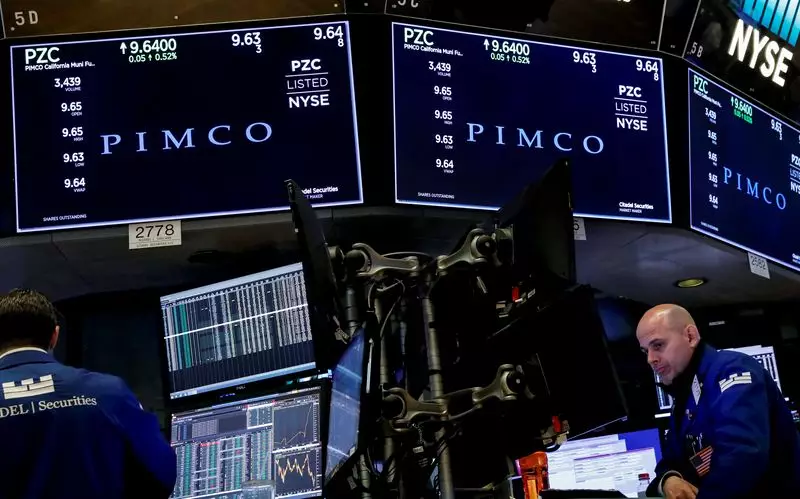The UK government bond market has been experiencing heightened volatility, prompting significant reactions from major investment firms and asset managers. Despite the turmoil characterized by a sell-off in UK debt, prominent players like PIMCO have expressed continued interest, suggesting that the market may stabilize. As investors grapple with fluctuating yields and evolving fiscal policy, understanding the factors driving bond market dynamics is crucial.
The benchmark 10-year UK government bond yield recently peaked at an alarming 4.925%, marking its highest level since 2008. This sharp increase, driven primarily by external influences such as rising U.S. yields, poses severe implications for the UK economy. Yield movements often indicate shifts in market sentiment, where rising yields typically correlate with falling bond prices. The current landscape has created a precarious situation for finance minister Rachel Reeves, who now faces the dual challenge of managing public finances while instilling confidence among investors.
The mounting pressure on yields comes amid speculation that the government may need to make significant fiscal adjustments, including potential spending cuts or tax increases, to maintain adherence to fiscal guidelines. With public finances under greater scrutiny, concerns remain that elevated borrowing costs will hinder economic growth, exacerbating fiscal challenges rather than alleviating them.
Despite the turmoil, PIMCO, one of the largest asset management firms globally, remains optimistic about UK government bonds. They suggest that the recent sell-off represents an overreaction influenced by the significant rise in U.S. bond yields, which have climbed by approximately 50 basis points over the past two months. PIMCO economist Peder Beck-Friis has indicated that a contraction in government spending is increasingly likely, heralding both challenges and opportunities for investors in the UK bond market.
This perspective underscores the delicate balance investors must navigate: rising yields present attractive buying opportunities while simultaneously signaling potential economic strain. The contrasting growth forecasts for the U.S. and UK add complexity to the investment landscape, leading to divergent market expectations.
Investor sentiment has been impacted by the rapid fluctuation of yields, with some expressing concern over the implications for economic growth and fiscal health. Royal London Asset Management’s Craig Inches noted that while concerns over UK debt sustainability persist, the attractive yields offered by UK bonds have prompted him to increase his exposure to this asset class. This balancing act highlights a critical tension in the market; while rising yields can present value, they also come with inherent risks that can dampen economic progress.
Moreover, as money markets currently anticipate fewer rate cuts from the Bank of England than previously expected, investors are beginning to reassess their positions. The idea that the BoE may implement more aggressive rate cuts to stabilize the economy and support market confidence has gained traction, further influencing market behavior.
Market observers speculate that the Bank of England may need to adopt a more dovish stance in response to evolving economic pressures. Interest rate cuts typically bolster the appeal of bonds, particularly as higher-yielding securities prevail in the market. However, with ongoing concerns about inflationary trends, which show signs of rebounding, the path to rate adjustments remains uncertain.
Neil Mehta from RBC BlueBay Asset Management warned that long-dated UK government bond yields could rise further, potentially reaching 6%. This aligns with broader concerns regarding deteriorating growth expectations amidst an inflationary backdrop. In such an environment, investors are advised to remain vigilant and proactive, continuously assessing market developments that may significantly impact their strategies.
As the UK government bond market grapples with the dual pressures of rising yields and economic uncertainty, the outlook remains complex. Factors such as fiscal policy adjustments, investor sentiments, and inflation trends will play pivotal roles in shaping future market dynamics. For investors, the key lies in carving out informed strategies that balance the potential for gains against the risks of further market volatility. As the next phases of economic policy unfold, stakeholder engagement and adaptive strategies will be essential for navigating this ambiguous landscape.

